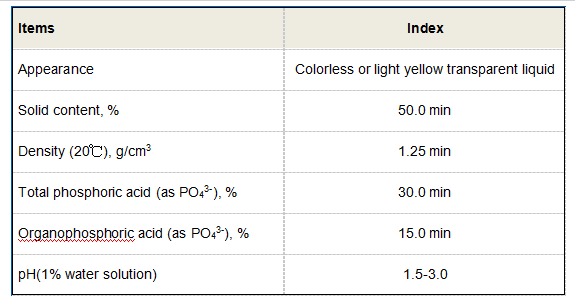pbtca
Understanding PBTCA The Multifaceted Chemical
PBTCA, or 2-Phosphonobutane-1,2,4-Tricarboxylic Acid, is a chemical compound that has garnered significant attention in various industrial applications due to its multifunctional properties. As a water-soluble, biodegradable chelating agent, PBTCA is particularly noted for its ability to bind metal ions, making it an essential component in many formulations ranging from water treatment to detergents and beyond. In this article, we will delve into the properties, applications, and significance of PBTCA in different sectors.
Chemical Properties
PBTCA is a phosphonic acid derivative characterized by its three carboxylic acid groups and one phosphonic acid group. This unique structure endows PBTCA with excellent chelating abilities, allowing it to effectively bind metal ions such as calcium, magnesium, and iron. The high stability of the metal complexes formed with PBTCA ensures that these ions do not precipitate out of solution, which is particularly beneficial in systems where scale formation is a concern.
Moreover, PBTCA is known for its low toxicity and environmental friendliness. It is readily biodegradable, meaning that it breaks down into non-toxic substances over time, making it a preferable choice for applications that aim to minimize environmental impact. This characteristic is especially crucial in today’s world, where sustainability and eco-conscious practices are increasingly prioritized.
Applications of PBTCA
1. Water Treatment One of the primary applications of PBTCA is in the water treatment industry. Its ability to chelate metal ions makes it effective in preventing scale formation in water systems. By binding calcium and magnesium ions, PBTCA helps maintain the efficiency of cooling towers, boilers, and other water systems, thereby extending equipment life and reducing maintenance costs.
pbtca

2. Detergents and Cleaning Products PBTCA is frequently employed in the formulation of detergents and cleaning agents. Its chelating properties help soften water, which enhances the effectiveness of surfactants in breaking down oil and grease. Additionally, it aids in preventing the deposition of metal ions on surfaces, thus improving the overall cleaning performance of these products.
3. Agriculture In the agricultural sector, PBTCA can be used as a soil conditioner. Its ability to chelate essential micronutrients such as iron and zinc ensures that these nutrients remain available for plant uptake. This can lead to improved crop yields and healthier plants, particularly in soils that are prone to nutrient deficiency.
4. Industrial Applications PBTCA finds utility in various industrial processes, including paper manufacturing and textile processing. Its capacity to control metal ion levels helps in maintaining the quality of products and preventing defects associated with metal impurities.
Significance and Future Perspectives
The significance of PBTCA extends beyond its immediate applications; it reflects a growing trend towards the adoption of safer and more sustainable chemicals in various industries. As environmental regulations become stricter and consumers demand greener products, PBTCA is poised to play an increasingly vital role in formulations that meet these needs.
Ongoing research into the properties and potential applications of PBTCA may uncover new uses in fields such as pharmaceuticals and food processing, where its chelating capabilities might offer innovative solutions. Additionally, as industries aim to reduce their carbon footprint and overall environmental impact, the biodegradable nature of PBTCA positions it as a frontrunner in the quest for eco-friendly alternatives to conventional chemicals.
In conclusion, PBTCA is a versatile and environmentally friendly compound that serves multiple functions across different sectors. Its ability to chelate metal ions while being biodegradable places it at the forefront of sustainable chemical solutions in an ever-evolving industrial landscape. As the global focus shifts towards sustainability, the future of PBTCA looks promising, making it a compound worth watching in the years to come.
-
Water Treatment with Flocculant Water TreatmentNewsJun.12,2025
-
Polymaleic AnhydrideNewsJun.12,2025
-
Polyaspartic AcidNewsJun.12,2025
-
Enhance Industrial Processes with IsothiazolinonesNewsJun.12,2025
-
Enhance Industrial Processes with PBTCA SolutionsNewsJun.12,2025
-
Dodecyldimethylbenzylammonium Chloride SolutionsNewsJun.12,2025





